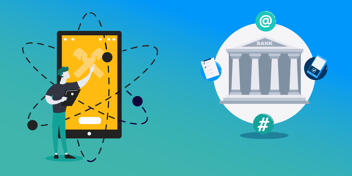Create segments and learn exactly what your customers need
Companies with larger customer bases can greatly benefit from segmenting them into relevant groups. Segments are sources of deep insight, and Zurvey.io is there to help in the process.
If your company has a customer-centric approach, you are probably always on the lookout for methods to better understand and care for your customers. You’re aiming to learn about their needs and problems so that you can tailor your products and services to them.
However, as your customer base grows, it also diversifies: the characteristics and preferences become varied and require you to come up with multiple solutions to address them in the most suitable way. A great tool to achieve this is segmenting your customer base.
Segmentation is essentially about finding resemblances or patterns in who your customers are, what they desire, and how they behave. Customer segments serve you equally well if you’re tracking customer experience in your stores, working to improve user experience on your app or website, or trying to add the most delightful features to your products. They’re helpful in identifying what products and services to create next, and how to be more effective in marketing and selling existing ones.
How do you create relevant segments?
There is no single right way to create customer segments: they will be different for every company, depending on their sector, strategy, products, size, and so on.
You need to look at what kind of categories make sense for your industry or team.
Relevant customer characteristics can be anything from in-app behavior to skin type to age, the list is endless. Think about who uses your product or service—and where, why, when, and how. Existing user personas and your customer journey map are both helpful starting points in determining guidelines for segmentation.
Typical segmentation strategies include:
- Demographic – general information such as gender, age, education, and income.
- Geographic – based on customer location, such as place of residence or preferred/most visited store.
- Behavioral – this can mean many things, like customer loyalty, purchase history, basket size or engagement level.
- Technographic – segmentation based on what kind of device or equipment your customers use/have.
- Firmographic – this is relevant especially to B2B companies, as it relates to data such as industry type, organizational size, or total sales/revenue.
- Psychographic – if you want to appeal to your clients’ sense of identity, segment by values, personality types, interests, and attitudes.
- Feedback-based – especially common in the world of CX is to segment based on ratings and reviews, using metrics like NPS©, CES, and CSAT.
- Needs-based – typical pain points, problems or goals can also serve as base for segmentation, focusing on the value proposition that you offer.
Beyond putting people into categories
Once you have your segments ready, you can use them to gather more feedback by asking segment-specific questions. This way, you learn deeply about your customers and can create content or add product features addressing unique needs and challenges. We encourage you to collect data from multiple sources, including phone calls, surveys, emails, and app reviews.
Zurvey.io’s most recently added Audience feature aids you in the process of segment-specific feedback collection. Audience serves as your primary respondent database, and you can use it to target survey campaigns, while the Zurvey.io platform can also gather and analyze both qualitative and quantitative feedback.
Personalize, personalize, personalize
Once you have your segments, your data, and the analysis insights, it’s time to create a strategy for improving the way customers experience your brand, product, or service. Personalization engages your customers and strengthens relationships with them, helping your users derive more value from your offerings.
Depending on your role, team, or department, you could personalize through:
- Marketing content and emails: honor premium customers with rewarding promotions; impress new leads through a thoughtful welcome sequence; write blog posts intriguing to decision makers.
- Customer support channels: meet customers on the platforms they’ve shown interest in or organize exclusive events for them.
- Website or product UX design: target groups with different landing page experiences based on their language or country, or create product recommendation carousels to peak their interest.
At Zurvey.io, we’re happy to help with segmentation and feedback analysis projects – let’s get in touch and you’ll see how easy it is!
Share:




